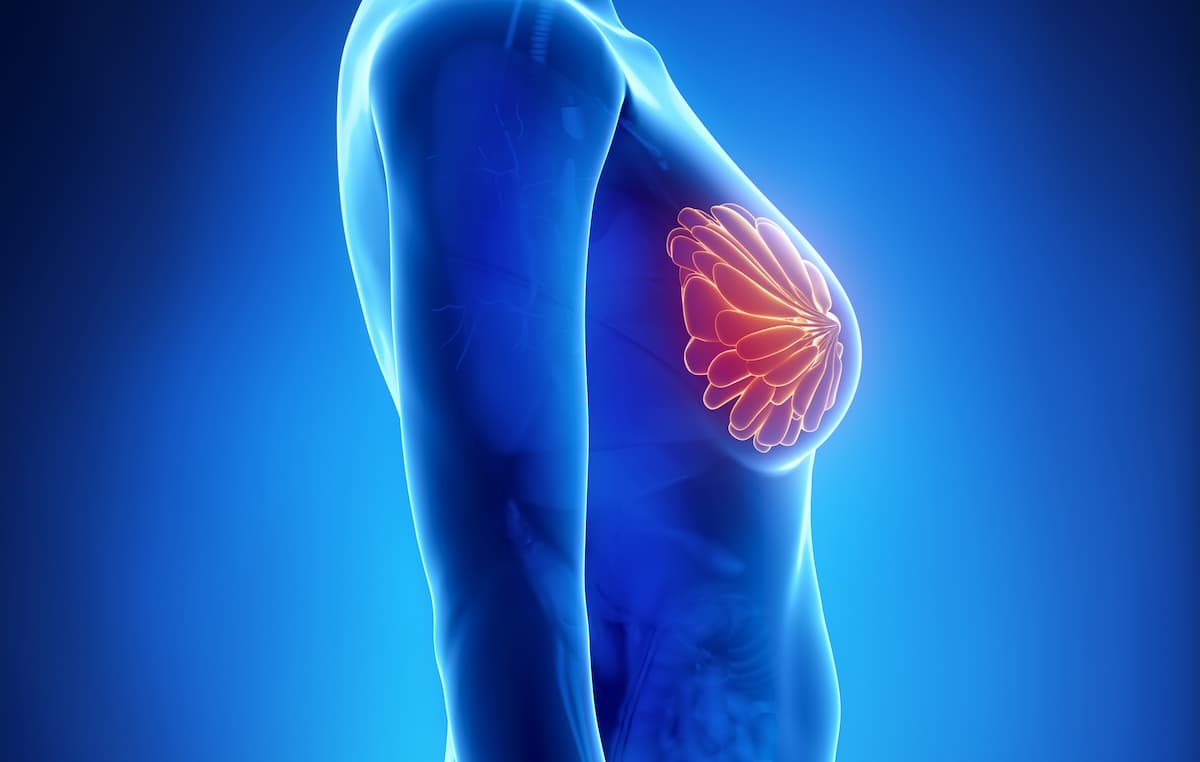Inavolisib-Based Therapy Boosts Progression-Free Survival in Breast Cancer
Inavolisib-based therapy reaches the primary end point of the phase 3 INAVO120 study among patients with PIK3CA-mutated breast cancer.
Inavolisib-based therapy reaches the primary end point of the phase 3 INAVO120 study among patients with PIK3CA-mutated breast cancer.

Inavolisib (Itovebi) plus palbociclib (Ibrance)/fulvestrant (Faslodex) led to longer progression-free survival (PFS) than placebo plus palbociclib/fulvestrant in patients with PIK3CA-mutated, HER2-negative, hormone receptor (HR)–positive locally advanced or metastatic breast cancer, investigators of the phase 3 INAVO120 study (NCT04191499) published in The New England Journal of Medicine find.
In the inavolisib group, median PFS was 15.0 months (95% CI, 11.3-20.5), and in the placebo group, it was 7.3 months (95% CI, 5.6-9.3; HR, 0.43; 95% CI, 0.32-0.59; P <.001). The objective response rate in the inavolisib group was 58.4% vs 25.0% in the placebo group.
At the time of interim analysis, overall survival (OS) probability at 6, 12, and 18 months was 97.3%, 85.9%, and 73.7% in the inavolisib group, respectively, and 89.9%, 74.9%, and 67.5% in the placebo group, respectively (HR, 0.64; 95% CI, 0.43-0.97; P = .03).
“Our trial met the primary end point, showing that the addition of inavolisib to palbociclib/fulvestrant resulted in substantially longer [PFS] than placebo plus palbociclib/fulvestrant,” the authors of the study wrote.
Patients were split into 2 groups: one was assigned to receive an orally administered dose of inavolisib at 9 mg once daily during each 28-day cycle, and the other was assigned to receive placebo once daily. Both groups were given 125 mg of palbociclib orally once daily on days 1 to 21 of each 28-day cycle and 500 mg of fulvestrant intramuscularly on days 1 and 15 of the first cycle, then approximately every 28 days after.
The primary end point was PFS, and secondary endpoints were OS, confirmed objective response, best overall response, clinical benefit, and response duration.
Trial enrollment was 325 patients, with a median age of 54 and a postmenopausal rate of 60%. To be eligible, patients had to have PIK3CA-mutated, HR-positive, HER2-negative locally advanced or metastatic breast cancer, as well as disease recurrence or progression within 12 months after adjuvant endocrine therapy, a fasting glucose level of lower than 126 mg per deciliter, and a glycated hemoglobin level of less than 6.0%.
Concerning adverse effects (AEs), grade 3 or 4 neutropenia occurred in 80.2% of patients in the inavolisib group and 78.4% of patients in the placebo group; grade 3 or 4 hyperglycemia occurred in 5.6% and 0%, respectively; grade 3 or 4 mucosal inflammation or stomatitis in 5.6% and 0%; and grade 3 or 4 diarrhea in 3.7% and 0%. In the safety analysis group, 98.8% of patients in the inavolisib group and 100.0% in the placebo group experienced at least 1 AE.
AEs led to the discontinuation of trial agents in 6.8% of the inavolisib group and 0.6% of the placebo group. Grade 5 AEs were reported in 3.7% of the inavolisib group and 1.2% of the placebo group. None of the deaths were judged by investigators as related to the trial agents.
Overall, the disease burden was high: 51.4% had metastases in at least 3 organs, 80.0% had visceral metastases, and 51.7% had liver metastases. Additionally, 82.8% of patients had received neoadjuvant or adjuvant chemotherapy.
The authors of the study note that even though the study met the primary end point, inavolisib plus palbociclib/fulvestrant showed little improvement in patients older than 65 years and in patients who previously received both an aromatase inhibitor and tamoxifen.
Regarding limitations, the researchers cite the trial’s design to assess only 1 of 3 CDK4/6 inhibitors approved for the treatment of this cancer, the limited number of patients who had previously received adjuvant CDK4/6 inhibitors, the exclusion of patients with type 1 or 2 diabetes who required ongoing treatment, and the lack of diversity among patients as its biggest limiters.
Reference
Turner NC, Im S-A, Saura C, et al. Inavolisib-based therapy in PIK3CA-mutated advanced breast cancer. N Engl J Med. 2024;391(17):1584-1596. doi:10.1056/NEJMoa2404625
Newsletter
Stay up to date on recent advances in the multidisciplinary approach to cancer.
2 Commerce Drive
Cranbury, NJ 08512
All rights reserved.